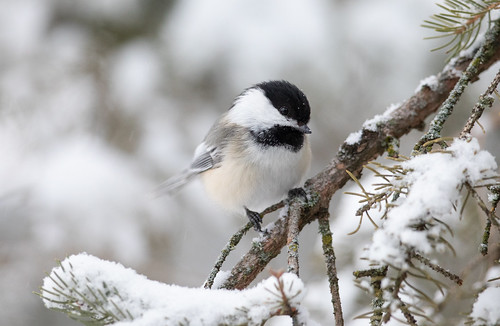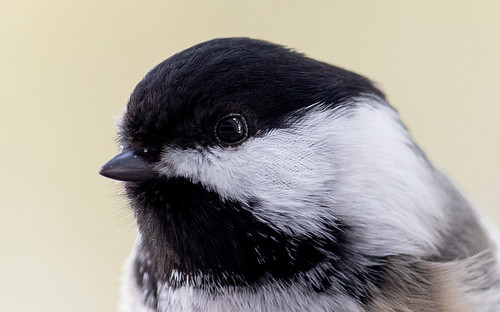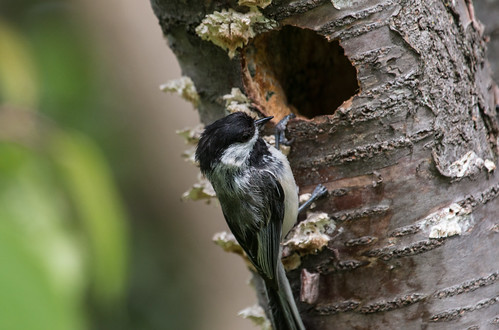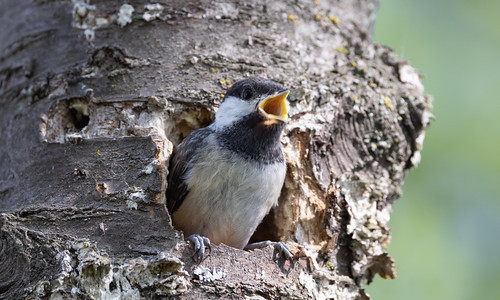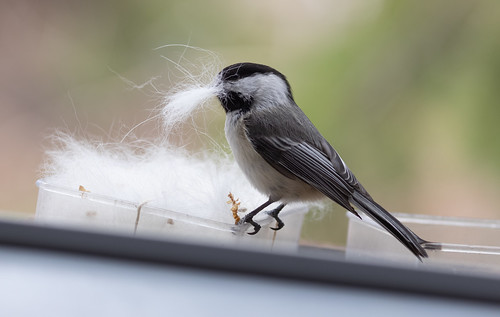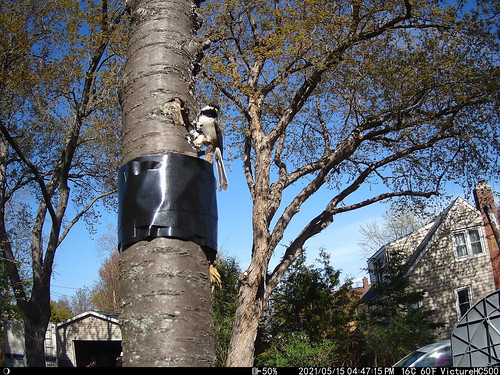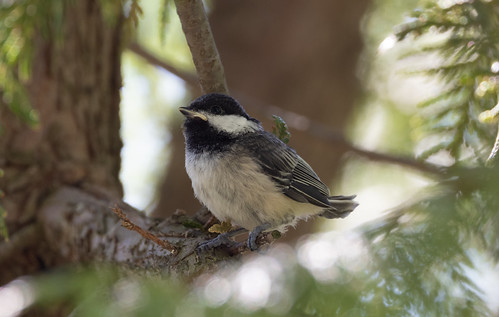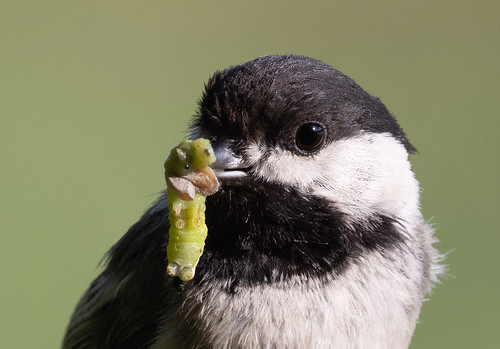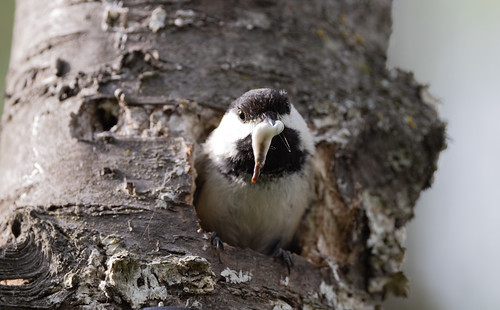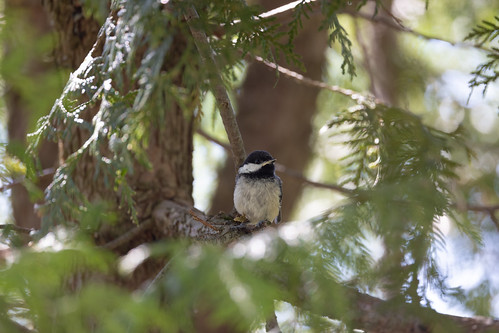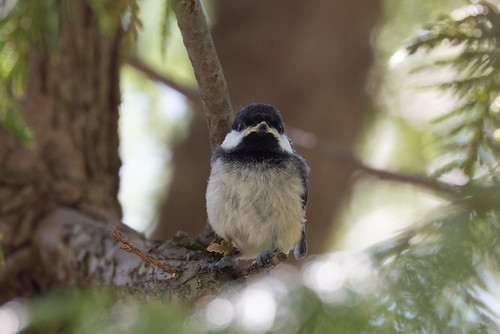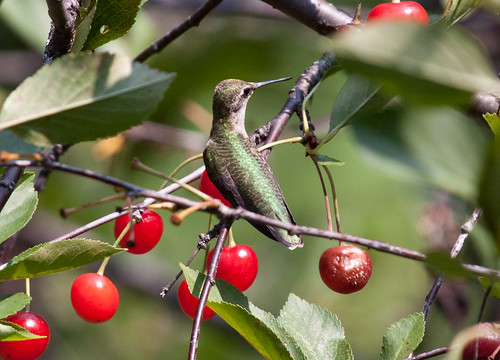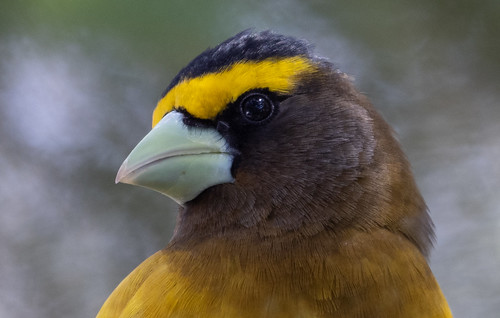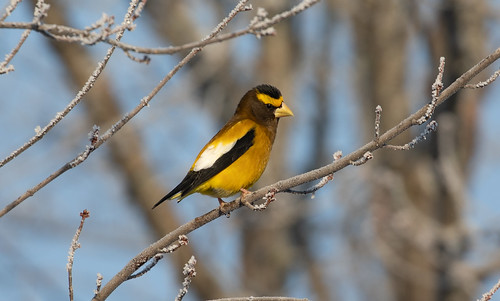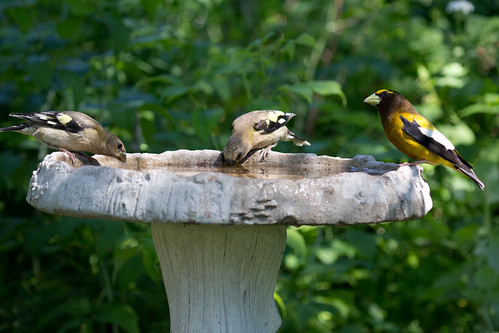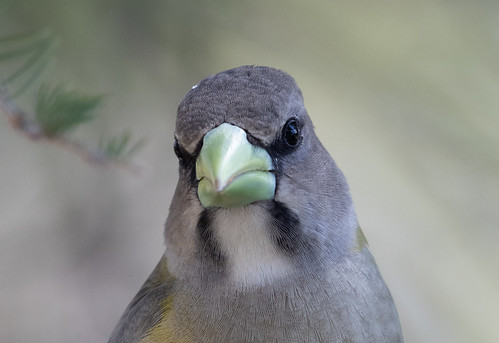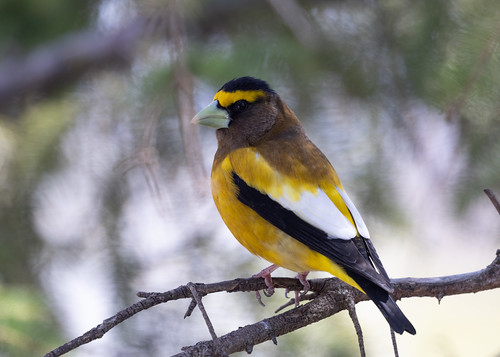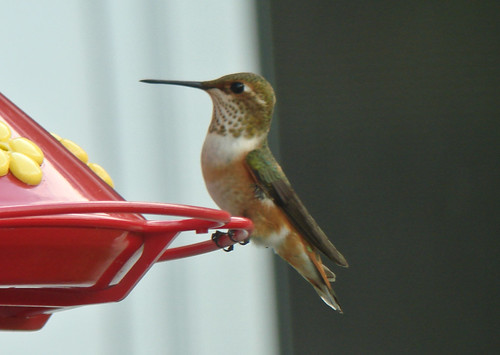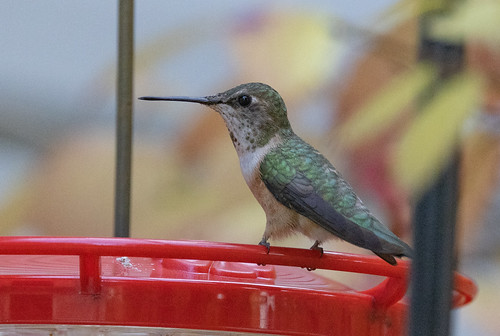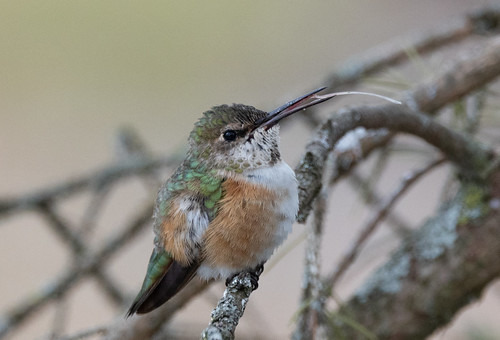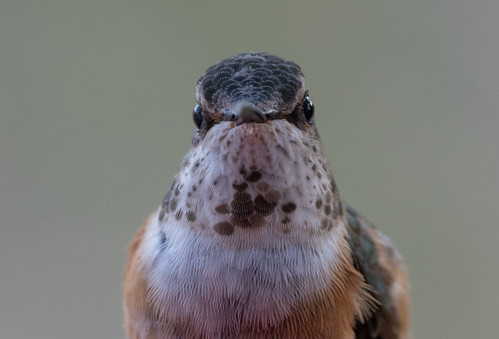Of all the twenty-one-hundred-plus bird species I’ve seen in my lifetime, the one I’ve seen in more places and on more days than any other is the Black-capped Chickadee. It was the very first bird I saw when I first went out with binoculars and my field guide on March 2, 1975, and from that moment I was smitten.
If I were to be stuck on a desert island for months or years with only one kind of bird for company, I'd definitely want it to be the chickadee. Most other birds would keep their distance, and virtually none would make eye contact. Chickadees are wonderfully sociable, and not just with their own kind. Jays and other corvids would probably also keep me company, but they're more judgmental. If I did one thing wrong, even something I didn't know was wrong, they'd shun me for life and warn all their companions to do the same thing. Chickadees are much more forgiving.
So chickadees are the #1 bird on my Top Ten Favorite Birds of All, but they’d have to do something pretty unusual to get on my Top Ten Birds for any given year, much less win that year's championship. And this year there was stiff competition, especially from three species—the Pileated Woodpeckers who are hanging around my yard all the time now, the Evening Grosbeaks who visited my yard in big numbers every day from April 25 through May 18, and the Rufous Hummingbird who absorbed almost all my attention from November 6 through December 4. Yet as I review 2021, my regular old backyard chickadees edged out everyone else, not just reaching the Final Four but taking home the trophy. What could they possibly have done to achieve this?
It all started on April 10 when I looked out my dining room window to see two chickadees together at a cavity in Russ’s old cherry tree. They were busy taking turns hacking into a hole, digging out a nesting cavity deep inside the dead wood. Might they actually nest in my backyard where I could watch them every day?
I've photographed nesting chickadees before, digging the cavity, bringing food in, and taking out fecal sacs. And in 2015, one of my most beloved chickadees of all time, a male who'd had a badly overgrown bill (the tip finally broke off) and was permanently missing three toes, successfully nested at my neighbor Jeanne's house. I got to watch both parents bringing in food and also when three of the babies left the nest.
But I didn't learn about them until the day before they fledged. I'm sure chickadees have nested in my own yard many times over the years, but I don't like searching out nests because my jays and crows follow me when I'm outdoors, and tiny nestlings are one of their favorite foods. Never had I watched an entire chickadee nesting cycle before, much less in such an easy-to-see spot.
Talk about counting your fledglings before the eggs are laid! Even as I was thinking through how fantastic this could be, I suddenly realized there was a hole just four inches below the one they were working on. A chickadee nest chamber inside a cavity averages 8 inches in depth, which meant when the birds dug down to the level of that second hole, they’d abandon ship.
They’d already been working so hard that I wanted to help if I could, so I found a large piece of bark and entirely covered that lower entrance.
That saved the day—the chickadees finished excavating and started building a nest inside.
Eden, the girl across the street, brought me some fur from her dog Ranger which I set out in my window feeder. On April 23, I got photos and video of the mother plucking a big wad of that fur. (How do I know this was the mother? Both birds in the pair work together to excavate, but only the female builds the nest.)
My trail cam caught her carrying it into the nest.
Finally, after a couple of weeks of watching their comings and goings at the entrance, I stopped seeing activity at the nest. That meant either they'd abandoned it or the female was laying eggs—before she had a full clutch, both birds would avoid the nest except during the brief time each morning when she was laying an egg.
On May 3, my trail cam caught a short video of both birds leaving the cavity together. That was almost certainly after the male came to feed the incubating female—she probably followed him out to take a bathroom break, groom herself, and find some of her own food.
May 15th was the first time my trail cam caught a bird carrying tiny caterpillars into the nest. I think a male bringing food to his mate would have chosen larger grubs or some of the mealworms I set out in my window feeder, so I presumed the nestlings had hatched and this was one or the other parent feeding them.
That presumption may have been premature but I'll never know. It supposedly takes at most 16 days for babies to fledge—the later the better. If the young had hatched on or before May 15, they'd be fledging by May 30, but they didn’t until June 4. The young are also supposed to climb up to and look out the entrance for a few days before fledging, but I never once observed a young bird peeking out until the very day they fledged.
So what was happening on May 15 when the bird brought in tiny caterpillars? It was puzzling—I suppose the male might have been feeding his incubating mate very tiny grubs, but based on how well developed the plumage was on the fledglings, it’s also possible they simply didn’t leave the nest until they were 21 days old.
These two parents had long been my everyday birds who took mealworms from my hand, so they trusted me near their nest taking photos. They continued coming to me for mealworms during this whole process, but only once did I ever see one carry a mealworm to the nest. They seemed to gobble them down as a quick, easy meal for themselves in between searching for more natural fare for their babies.
I got an amazing array of photos...
...a very high quality video of one baby fledging...
...and photos of that one after its inaugural flight to a tree at my neighbors’ house.
I still thrill to see the photos of that one little baby—the result of so many dedicated weeks of parental care.
To top all that off, my baby grandson Walter paid a whole lot of attention to the chickadees coming to the feeder by my office window, where we set a crib for his naps while my daughter's family was living with us, and now he watches them at his own feeder hanging out his living room window. He's charmed by how each chickadee flies in, grabs a seed, and flies off. From morning till night we can watch them coming and going, his face lighting up with every visit as we said "Hello, chickadee!" and then "Bye-bye, chickadee!" Being that kind of a grandma, I even made up "The Chickadee Song" just for Walter.
This was our beloved cherry tree's last stand. It was dead and riddled with holes, and so this fall we cut it down so one of its suckers could take over. I was so thrilled that this splendid tree, which has given me so much joy in past years, gave one more year of pleasure. Now its own little offshoot will take its place.
Between my joy at the chickadees giving that cherry tree one final hurrah, my joy at watching the whole nesting cycle, and Baby Walter’s joy seeing chickadees so much, the Black-capped Chickadee sailed past its Final Four competitors to win the championship, truly my favorite bird of 2021.
